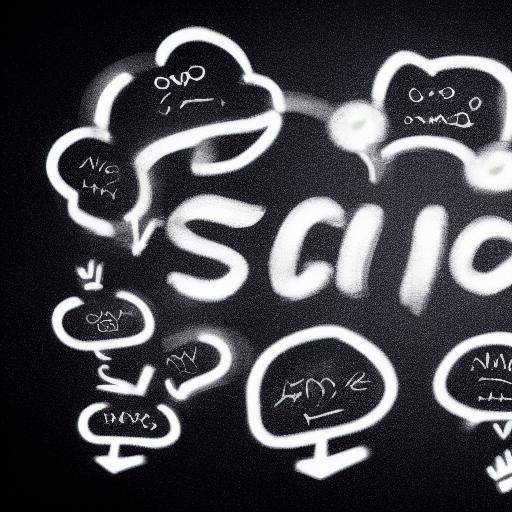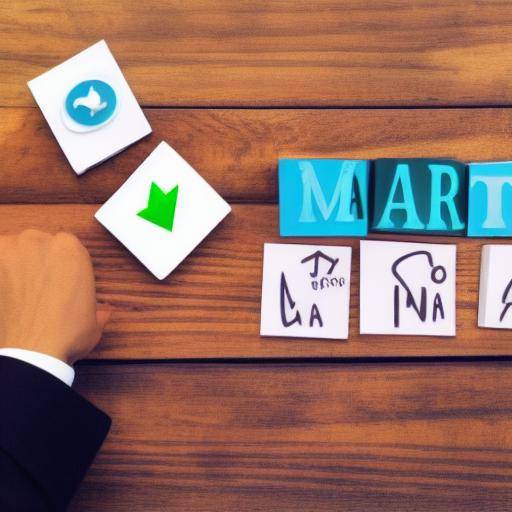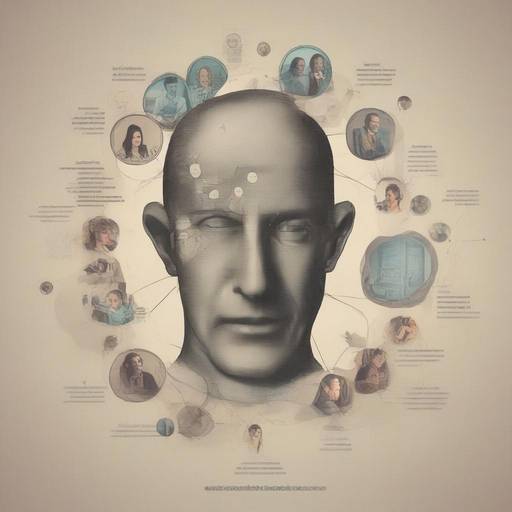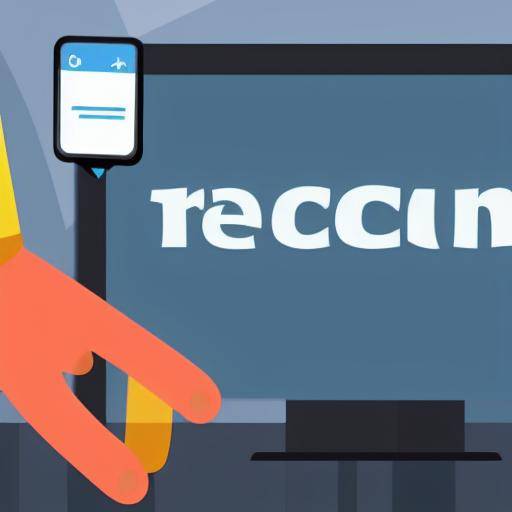
Gamification, a concept that has become increasingly relevant in the business and educational sphere, has become a powerful strategy to motivate people to achieve their goals. In this article, we will thoroughly explore gamification, its relationship with reward systems and motivation, as well as its impact on different contexts. From its historical origin to future trends, we will provide a complete vision of how to take advantage of gamification in a reward system to enhance motivation and performance.
Introduction
Gamification, a term that combines "game" and "application," refers to the use of games' own elements in non-ludic contexts to motivate and involve people. In an increasingly digitalized world, gamification has proven to be an effective tool to increase participation, learning and productivity. Through the application of mechanics, dynamics and game techniques, organizations can drive desirable behaviors and reward the achievement of goals.
In this article, we will explore how to use gamification in a reward system to boost the motivation and commitment of employees, students or users. From its historical evolution to its practical applications, we will analyze in detail how gamification can transform the way people face challenges and achieve their goals.
History and Background of Gamification
Gamification has its roots in behavioral psychology and game design. Throughout history, various attempts have been made to incorporate play elements in different fields, from education to marketing. With the advent of the digital era, gamification experienced a rebirth, driven by technological advances and the growing interest in human motivation.
Conductive Psychology and First Experiments
The psychological principles underlying gamification date back to the pioneering work of psychologists such as B.F. Skinner, who developed the concept of positive reinforcement and operational conditioning. These foundations were applied in the first gamification experiments, where reward techniques were used to modify behaviors.
The Rise of Gamification in the Digital Era
With the proliferation of digital platforms and mobile devices, gamification became a strategy widely used in fields such as marketing, entrepreneurship and health. The development of interactive technologies enabled the creation of engaging gaming experiences, capable of motivating participants in innovative ways.
Relaying and Contemporary Evolution
In recent years, gamification has experienced continuous evolution, adapting to changing needs and taking advantage of advances such as artificial intelligence and increased reality. The integration of gamification into applications, educational platforms and working environments has expanded its scope and impact.
Analysis in Deep Gamification
Gamification offers a series of benefits that go beyond mere entertainment, affecting key areas such as motivation, commitment and performance. In turn, it poses challenges and considerations that need to be taken into account to maximize their effectiveness. Let us look at these aspects in detail.
Benefits of Gamification
- Increased motivation: Gamification is able to activate intrinsic and extrinsic motivation, generating an additional impulse to complete tasks or achieve goals.
- Improvement of Learning: By integrating game elements into educational processes, gamification promotes active participation and retention of knowledge.
- Promotion of the Competitive and Collaborative Spirit: The competitive and collaborative elements of the games can promote a sense of community and camaraderie among the participants.
- Data generation and feedback: Gamification facilitates the collection of data on the performance of users, allowing personalized feedback and identification of improvement areas.
Challenges and Considerations
- Oversaturation and Fatigue: The saturation of bad game elements can lead to fatigue and loss of interest by participants.
- Equity and Transparency: Equity in the allocation of rewards and equal access to gaming opportunities are crucial aspects to ensure user acceptance and commitment.
- Balance between Fun and Objectives: It is essential to maintain an adequate balance between the fun provided by gamification and the objectives or tasks that are intended to enhance.
Current Trends in Gamification
Gamification continues to evolve with the incorporation of emerging technologies and innovative approaches. Among the outstanding trends are artificial intelligence-based gamification, the customization of gaming experiences and the integration of elements of virtual and increased reality.
Comprehensive Review of the Implementation of Gamification
The implementation of gamification in a reward system requires a strategic approach and a deep understanding of game and motivation dynamics. Through the exploration of study cases and best practices, it is possible to identify the key elements to maximize the potential of gamification.
Case studies and best practices
We will analyze cases of success where gamification has shown significant impacts on business, educational and health environments. From reward programs in companies to interactive educational platforms, we will explore the strategies used and the results obtained.
Opinions of Experts and Futures
We will gather the opinions of experts in gamification, psychology and motivation to provide a comprehensive view on the current and future role of gamification. This will allow to project trends and possible developments that will shape the gamification application in reward systems.
Comparison of Methods and Approaches
In addition, we will compare different gamification methods and approaches used in reward systems, highlighting their strengths and weaknesses. Understanding the differences between these approaches will allow you to select the most appropriate strategy for each specific context.
Practical Tips and Accessible Recommendations
Gamification may seem complex in theory, but its practical application can be simplified by adopting concrete advice and actionable recommendations. We will then detail strategies and practical steps to integrate gamification into reward systems effectively.
Tips for Successful Implementationa
- Defining Clear Objectives: Establish clear and measurable goals that align with the goals of the organization and the expectations of the participants.
- Design Attractive Game Mechanics: Create game dynamics that are stimulating and relevant to participants, involving elements such as challenges, rewards and feedback.
- Customize the Experience: Adapt the gamification to the individual preferences and characteristics of the participants to increase their commitment and motivation.
Examples of Successful Implementation
We will analyze concrete examples of organizations that have integrated gamification into their reward systems, highlighting the strategies used and the results obtained. These case studies will provide practical examples of how gamification can transform motivation and performance.
Additional Tips and Specific Considerations
In addition, we will provide additional advice focused on specific areas, such as effective communication, attractive reward design and continuous evaluation of the gamification system. These key elements will help maximize the impact of gamification on the motivation of participants.
Perspectives and Views of Industry and Experts
To enrich the analysis of gamification in reward systems, we will collect perspectives and opinions from industry experts. The reflections of professionals specializing in gamification, organizational psychology and human resources management will provide an informed insight into the potential and limitations of this strategy.
Case Studies and Practical Applications in Real Life
Case studies provide a deep understanding of how gamification can directly impact people's motivation and behavior in real contexts. We will explore concrete examples of organizations that have implemented gamification-based reward systems, analyzing their experiences and results.
Future Trends and Predictions
Finally, we will examine emerging trends in gamification, reward systems and motivation. Based on current data and expert opinions, we will offer predictions on how the use of gamification will evolve in the coming years and what will be their implications in different contexts.
Conclusion
In short, the gamification in reward systems offers a window of opportunity to boost motivation and commitment in an innovative way. From its historical foundations to its practical applications, we have explored how gamification can transform the way people face challenges and achieve their goals. By understanding benefits, challenges and best practices, it is possible to leverage the potential of gamification to enhance performance and motivation in diverse environments.
Frequently asked questions
How can gamification be implemented in a reward system effectively?
The effective implementation of gamification in a reward system requires a clear understanding of the objectives, the design of stimulating game mechanics and the customization of the experience for participants. In addition, it is essential to establish transparent communication and continuous feedback to optimize the system.
What benefits can be achieved in the educational field?
Gamification in the field of education can increase student participation, improve knowledge retention and foster a collaborative and motivating learning environment. By integrating game elements into education, it is possible to stimulate greater commitment and willingness of students to face academic challenges.
How to ensure fairness and transparency in a gamification-based reward system?
To ensure fairness and transparency in a gamification-based reward system, it is essential to establish clear rules and objective criteria for the allocation of rewards. Equal opportunities should also be offered for participation and access to rewards, avoiding situations of inequality or favouritism.
What are the emerging trends in gamification and reward systems?
Emerging trends in gamification and reward systems include customization of gaming experiences, integration of technologies such as artificial intelligence and IoT, and application of innovative game dynamics. In addition, there is an emphasis on gamification focused on the well-being and intrinsic motivation of participants.
What are the main limitations or challenges of gamification in reward systems?
Among the limitations and challenges of gamification in reward systems are the possible overexposition fatigue to game elements, the difficulty to maintain a balance between fun and real goals, and the need to ensure equity and transparency in the allocation of rewards.
What impact can gamification have on the motivation and performance of employees in a working environment?
Gamification can significantly influence the motivation and performance of employees in a working environment by providing additional stimulus to achieve objectives, promoting teamwork and collaboration, and offering effective feedback that motivates employees to improve their performance. By integrating game elements into labor activities, gamification can increase employee commitment and productivity.
Conclusion: Gamification in reward systems represents a versatile and powerful tool to enhance motivation and performance in various contexts. In understanding its foundations, benefits and challenges, it is possible to design and implement effective gamification strategies that promote the achievement of objectives and encourage active participation. With the constant evolution of technology and new emerging trends, the strategic use of gamification promises to transform the way people address challenges and seek to achieve goals in the future.
We hope that this article has broadened your understanding of gamification in reward systems and provided you with valuable insights to effectively apply it in your working, educational or business environment!
With this full article, we have covered the history, benefits, challenges, trends, practical and future applications of gamification in reward systems. In addition, we have included frequent questions to provide readers with clear and useful answers to common questions on the subject. If you need adjustments or more information, do not hesitate to let me know.






















































